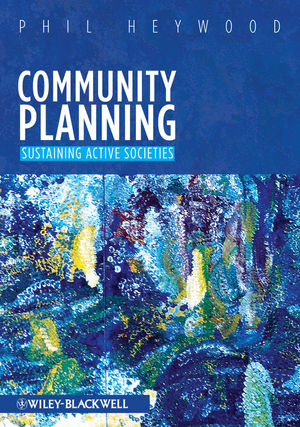Community Planning: Integrating social and physical environmentsISBN: 978-1-4051-9887-5
Paperback
296 pages
May 2011, Wiley-Blackwell
 |
||||||
Acknowledgements.
1 The Nature and Planning of Community Life.
Part One: Social and Economic Changes.
The current cascade of change.
Part Two: Community Life and Change.
Contemporary challenges to community life.
Part Three: Competing Interpretations of Community Structure and Change.
Order: genetically driven dominance.
Productivity and exchange: through market competition.
Control through transcendence of conflict: equality through struggle.
Collaboration: through negotiation, adjustment and mutual aid.
Part Four: The Roles of Cooperation.
Cooperation in practice.
Conclusions.
2 The Spirit and Characteristics of Community Planning.
Part One: Themes.
Communication.
Consultation.
Participation and exclusion.
The signifi cance of participatory theories.
Negotiation.
Part Two: Applications.
Necessary conditions for effective community consultation.
The role and themes of consultation.
Methods of consultation.
Consultation techniques.
Conclusion: relations of community planning with community action, community development and community organisation.
3 Local Communities of Place and Contact.
Social and organisational characteristics of local communities.
The physical forms of communities.
Spatial justice.
The planning of places.
Community participation and governance.
Conclusion: the durability of local communities of place and contact.
4 Communities of Interest and Interaction.
City communities.
Regional interest communities.
National communities.
Supranational political communities.
Global communities.
The many levels of community planning.
Conclusion: mixed scanning for integrated community planning.
5 Human Values and Community Goals.
Value formation.
The value of prosperity.
The value of liberty.
The values of social justice.
Values for sustainable communities.
Relations among the four community values.
Conclusions: how values can combine to help solve problems and shape creative plans.
6 Communities of Method.
Art and creativity in planning.
Science, knowledge and planning method.
Planning as a craft.
Political control and community participation.
Conclusions: values as the basis for communities of method.
7 Activities and their Analysis.
The links between activity systems and values.
The uses of models of activities.
The role of systems theory within the planning process.
Activity systems analysis in practice.
Conclusions: the roles of activity systems in community planning.
Appendix 1 Household demand and housing land supply statistics, Greater Brisbane 1996–2016.
Appendix 2 Employment Projections: Brisbane Statistical Division.
Key Assumptions.
8 People, Homes and Communities.
Demographic challenges in meeting global and local housing needs.
Technological responses and impacts.
Roads, wheels, wagons and motor vehicles.
Costs, means and access to provision and fi nance of housing.
Balancing demand and supply for shelter.
Conclusions: the contributions of shelter to community life.
9 Facets of Community.
Justifi cations for community intervention.
The planning and organisation of work.
The place of learning in community life.
The planning and delivery of health services.
Conclusion: the many facets of community.
10 Places, Spaces and Community Design.
Places and their properties.
Communal and collective spaces and places.
The language of design and the vocabulary of space and place.
Place-making: designing to make life.
Models of urban form.
Conclusion: bringing places to life.
11 Community Governance and Participation.
Governance, government and community participation.
Issues of freedom and order.
The roles of negotiation and partnership.
The development and evaluation of policies and proposals.
Roles and responsibilities in governance and participation.
Scales of community and their roles of governance and control.
Conclusions: the contributions of participation and governance to community life.
12 Conclusions: Community Planning Today and Tomorrow.
The elements of community planning.
Themes, roles and future directions.
The future of community planning.
Endnotes.
References.
Index.
A colour plate section.



